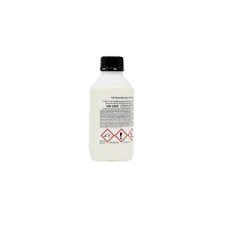cationic polyacrylamide uses
Cationic polyacrylamide (CPAM) is a widely used polymer that has garnered attention for its versatility and effectiveness in various industrial applications. This water-soluble polymer, synthesized from acrylamide monomers, exhibits cationic properties due to the incorporation of positively charged amine groups. Its unique characteristics make it highly valuable in industries such as water treatment, papermaking, textiles, and oil recovery.
.
In the papermaking industry, cationic polyacrylamide is utilized as a retention aid and drainage aid. It helps in improving the retention of fibers and fillers in the paper sheet during production, which results in enhanced paper quality and reduced raw material costs. By improving the drainage rate, CPAM also aids in speeding up the production process and enhancing the overall efficiency of the papermaking operations.
cationic polyacrylamide uses

Another significant application of CPAM is in the textile industry, where it is employed as a thickening agent in fabric dyeing and printing processes. The cationic nature of the polymer allows for better interaction with dye molecules, leading to uniform color application and improved fabric quality. Additionally, it can also enhance the adhesion of pigments, ensuring vibrant and durable color on textiles.
In the oil recovery sector, cationic polyacrylamide serves as a viscosity modifier in enhanced oil recovery (EOR) techniques. By increasing the viscosity of water injected into oil reservoirs, CPAM helps in improving oil displacement efficiency. This results in greater oil extraction rates, ultimately maximizing the potential yield from oil fields.
In summary, cationic polyacrylamide is a multifaceted polymer with a broad range of applications across various industries. Its effectiveness as a flocculant in water treatment, retention aid in papermaking, thickening agent in textiles, and viscosity modifier in oil recovery underscores its vital role in modern industrial processes. As industries continue to seek sustainable solutions, CPAM's ability to enhance operational efficiency while mitigating environmental impacts positions it as an essential compound for future applications.
-
Pbtc Scale InhibitorPBTC: A Scale Protector for Industrial Water TreatmentNewsAug.05,2025
-
Organic Phosphonate: An Efficient Defender in the Field of Scale InhibitionNewsAug.05,2025
-
Hydrolyzed Polymaleic Anhydride: Green Pioneer in Scale Inhibition FieldNewsAug.05,2025
-
PAPEMP Polyamino Polyether Methylene Phosphonic Acid For SaleNewsAug.05,2025
-
Flocculant Water Treatment: A Pioneer in Purification in the Field of Water TreatmentNewsAug.05,2025
-
Benzyl Isothiazolinone: An Efficient and Broad-Spectrum Antibacterial Protective GuardNewsAug.05,2025





